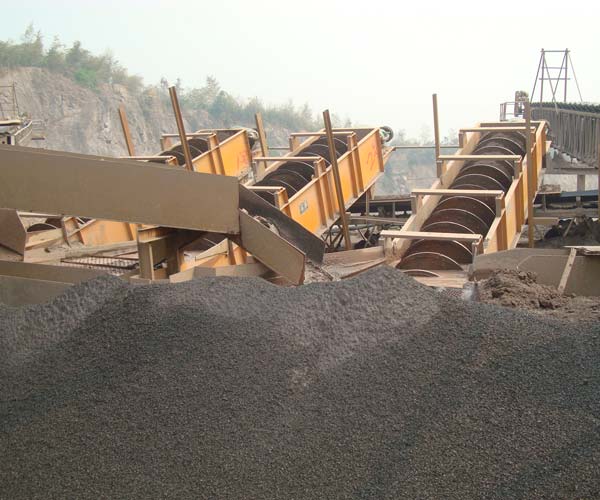
The screw sand washing machine stands as a testament to engineering ingenuity, addressing a critical need in modern industries – the purification of sand. Through its intricate yet efficient mechanical processes, this machine eliminates impurities and contaminants, ensuring that only the finest quality sand particles contribute to the creation of superior end products.
24 Online Service
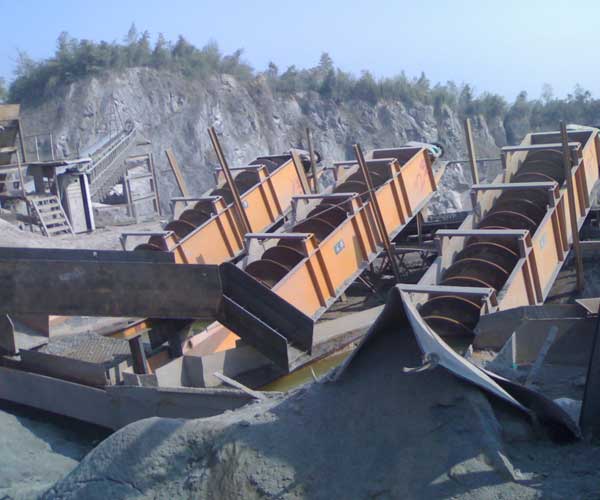
In the modern construction and manufacturing industries, sand plays a pivotal role in producing a wide range of products, from concrete to glass. However, the quality of sand is paramount, and impurities and contaminants within the sand can have detrimental effects on the final product’s integrity. Enter the unsung hero of sand purification – the screw sand washing machine. This ingenious piece of machinery is designed to meticulously cleanse sand, removing impurities and ensuring that only the highest quality sand particles make their way into production processes.
The screw sand washing machine serves as a critical component in the sand processing chain, contributing to the production of clean, high-quality sand suitable for a variety of applications. Its primary function is to remove impurities and contaminants from sand, which could include clay, silt, dust, organic matter, and other undesirable particles. These impurities not only compromise the structural integrity of end products but also hinder the efficiency of industrial processes. By eliminating these unwanted elements, the screw sand washing machine ensures that the sand meets the stringent quality standards required for construction, manufacturing, and other industries.
The screw sand washing machine’s mechanism is ingeniously simple, yet highly effective. It combines mechanical agitation, water, and the principle of gravity to separate different-sized particles and cleanse the sand. The core components of the machine include the screw shaft, washing trough, electric motor, reducer, and water inlet. Let’s delve into the step-by-step mechanical processes that unfold within this powerful sand purification equipment:
The process begins with the introduction of raw sand into the washing trough. The screw shaft, featuring helical blades, conveys the sand upward through the machine. As the sand travels along the screw, the blades agitate and scrub the sand particles, dislodging impurities and contaminants. This mechanical action ensures a thorough cleaning of the sand.
Simultaneously, water is introduced into the washing trough. The amount of water and its pressure can be adjusted based on the specific requirements of the sand purification process. The water serves multiple purposes – it helps in dislodging impurities, assists in separating particles of varying densities, and aids in carrying away the removed contaminants.
As the screw continues to rotate, the sand-water mixture moves along the length of the washing trough. The combination of the screw’s upward movement and the flowing water creates a gradient within the trough. This gradient exploits the principle of gravity to separate particles based on their size and density. Heavier and larger particles settle at the bottom, while lighter and smaller particles remain suspended in the water.
The separated contaminants, including clay, silt, and other unwanted particles, settle at the bottom of the washing trough due to their higher density. The machine is equipped with outlets for the discharge of these contaminants, preventing their reintegration with the cleaned sand. This discharge process ensures that the purification cycle remains efficient and consistent.
At the top end of the washing trough, the clean, purified sand emerges. The screw shaft’s helical blades gently lift the purified sand out of the trough and deliver it to the desired collection point. The resulting sand is now free from impurities and contaminants, ready to be utilized in a variety of applications.
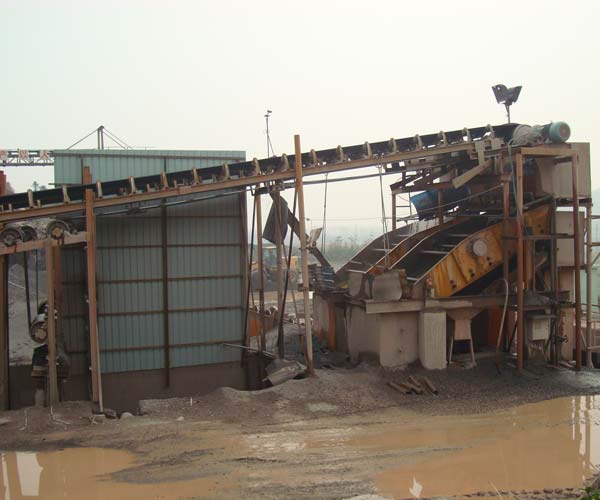
Sand, a vital component in concrete production, road construction, and other infrastructure projects, must meet stringent quality standards to ensure the integrity and durability of the final products. To attain such superior sand quality, the screw sand washing machine emerges as a pivotal tool in the process, equipped with a range of essential components that collaboratively facilitate thorough cleaning.
At the heart of the screw sand washing machine lies the screw conveyor, a fundamental component responsible for transporting and agitating the sand. This spiral blade mechanism, often referred to as an auger, plays a crucial role in the tumbling and cleaning process. As the machine operates, the screw conveyor rotates within the drum, moving the sand from the feed end to the discharge end.
The action of the screw conveyor serves multiple purposes. Firstly, it ensures a constant feed of sand into the machine, maintaining a consistent flow for efficient cleaning. Secondly, the rotational movement of the screw conveyor agitates the sand, effectively breaking down clumps and dislodging impurities. This combination of controlled movement and agitation sets the stage for subsequent cleaning stages.
The rotating drum is another indispensable component of the screw sand washing machine. Complementing the action of the screw conveyor, the drum provides the necessary space for the sand to undergo thorough cleaning. The design of the drum is vital, featuring perforated walls that allow water and finer particles to pass through while retaining larger particles and debris within.
As the sand progresses through the drum, a cascading effect is achieved. The continuous rotation and the flow of water create a dynamic environment where the sand is repeatedly lifted and dropped, promoting the disintegration of dirt, clay, and organic matter. This process enables the finer particles to be carried away by the water, leaving behind cleaner and more uniform sand.
Central to the efficacy of the screw sand washing machine is its water supply system. Clean water is the elixir that powers the cleaning process, effectively flushing out impurities and carrying them away. The water supply system comprises a network of spray nozzles strategically positioned within the rotating drum.
As the drum rotates, the spray nozzles emit pressurized water streams onto the sand. This water serves two primary functions. Firstly, it aids in breaking down stubborn clumps of dirt and particles, ensuring they are more easily washed away. Secondly, it helps in suspending finer particles in the water, allowing them to be carried through the perforations in the drum’s walls and eventually flushed out of the system.
The journey of sand through the screw sand washing machine culminates at the discharge chute. This is the point where the now thoroughly cleaned sand exits the machine, ready for further processing or direct use. The discharge chute is designed to efficiently direct the cleaned sand while minimizing the carryover of water and residual impurities.
A well-designed discharge chute ensures that the cleaned sand flows smoothly without creating blockages or spillages. It also prevents the reintroduction of contaminants back into the cleaned sand, safeguarding the integrity of the entire washing process. The efficiency of the discharge chute significantly impacts the overall effectiveness of the screw sand washing machine.
The key components of a screw sand washing machine – the screw conveyor, rotating drum, water supply system, and discharge chute – work in concert to achieve the paramount goal of thorough cleaning. The synergy among these components ensures that the sand is not merely transported but undergoes a comprehensive cleaning process.
The screw conveyor’s movement and agitation facilitate initial disintegration, while the rotating drum amplifies the cleaning action by creating a dynamic environment where impurities are loosened and suspended. The water supply system acts as a catalyst, ensuring that impurities are dislodged, suspended, and eventually flushed away. Finally, the discharge chute allows the cleaned sand to exit the system without recontamination.
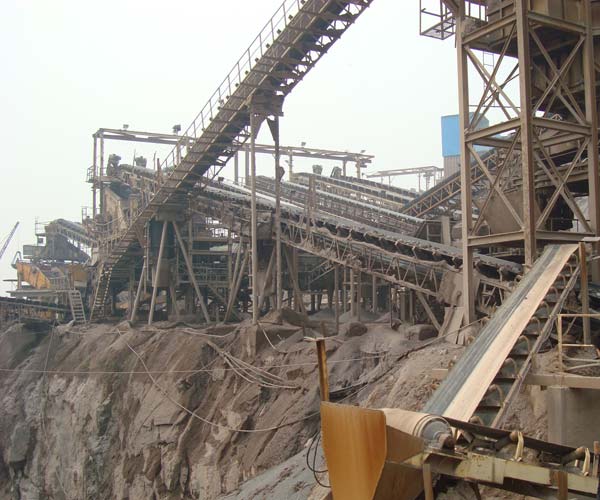
Among the innovations that have gained traction in recent years is the screw sand washing machine. This ingenious piece of machinery has revolutionized the way we clean and prepare sand for various applications.
The fundamental principle behind a screw sand washing machine lies in its utilization of the power of a rotating screw to lift and transport impurities away from the sand. This mechanism enables a thorough cleaning process by effectively agitating the sand-gravel mixture and dislodging any undesirable particles such as clay, silt, and organic matter. The rotational movement of the screw allows for a consistent tumbling and rolling action, ensuring that even the most stubborn impurities are dislodged and carried away.
One of the standout advantages of the screw sand washing machine is its remarkable processing capacity. Traditional methods of sand washing often involve manual labor, which is time-consuming and limits the volume of sand that can be processed. In contrast, the screw sand washing machine can handle large quantities of sand quickly and efficiently. The continuous operation of the screw mechanism ensures a steady throughput, allowing for a significant reduction in processing time. This makes it an ideal choice for projects that require a substantial amount of clean sand in a short timeframe, enhancing overall project timelines and productivity.
Amid growing concerns over water scarcity and environmental sustainability, the water recycling and reuse features of the screw sand washing machine stand out as a game-changer. Water is a precious resource, and traditional sand washing methods can be wasteful, requiring copious amounts of water for each cycle. The screw sand washing machine addresses this issue through its innovative water recycling system. The machine collects, separates, and recycles water used during the washing process, significantly reducing water consumption and conserving this valuable resource. This feature not only contributes to sustainable operations but also minimizes the environmental footprint of sand processing activities.
A common challenge faced in sand washing processes is the loss of valuable sand particles during cleaning. Traditional methods can lead to substantial sand loss due to inefficient washing and inadequate containment mechanisms. The screw sand washing machine excels in this aspect, thanks to its well-thought-out design. The rotating screw and its spiral flights create a controlled environment within the machine, allowing for thorough cleaning without compromising on sand retention. This design minimizes sand loss, ensuring that the maximum amount of cleaned sand is retained for use, ultimately maximizing the value extracted from each batch of material.
The adaptability of the screw sand washing machine is another factor that positions it as a superior choice for sand processing needs. Different applications and industries require varying types of sand, each with its unique characteristics and impurity profiles. The screw sand washing machine can handle this diversity with ease. Its adjustable design parameters, including rotational speed, inclination angle, and water flow rate, can be tailored to suit the specific requirements of different types of sand. Whether it’s fine sand for concrete production or coarser sand for road construction, the screw sand washing machine offers the versatility needed to achieve optimal cleaning results across various applications.
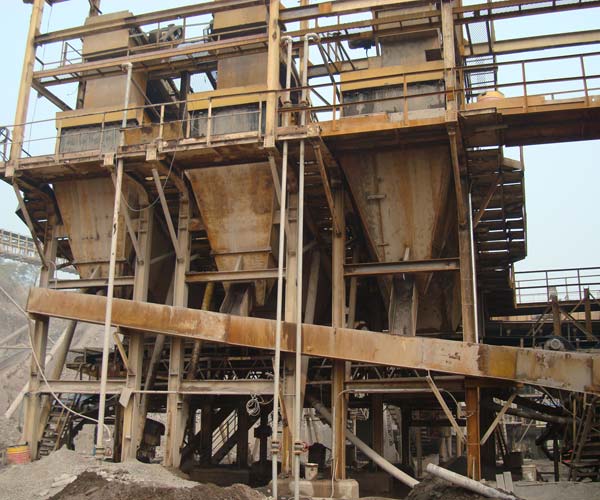
In the realm of industrial processes, technological advancements have consistently played a pivotal role in enhancing efficiency and productivity across various sectors. One such innovation that has gained significant prominence is the screw sand washing machine. This versatile piece of equipment has found its place in several industries, contributing to improved sand quality and enhanced production efficiency.
The application of screw sand washing machines has yielded remarkable success stories across various industries:
A construction company struggling with concrete quality due to inconsistent sand quality incorporated a screw sand washing machine into their operations. This resulted in a significant reduction in impurities, leading to improved concrete strength and durability. The company reported fewer instances of concrete failure and a boost in customer satisfaction.
A glass production facility was facing challenges in achieving the desired transparency and clarity in their glass products. By using a screw sand washing machine to provide clean and pure sand, they managed to enhance the optical properties of their glass, resulting in higher demand from customers who valued the improved quality.
A mining company implemented screw sand washing machines in their sand extraction process. This not only improved the quality of sand produced but also increased the yield of valuable minerals due to reduced loss of fines during processing. The company experienced higher profitability and improved sustainability.
To ensure the optimal performance and longevity of screw sand washing machines, users should follow these maintenance and best practices:
After each operation, clean the machine thoroughly to prevent the accumulation of sand, debris, and contaminants. Regular cleaning prevents clogs and ensures consistent performance.
Follow the manufacturer’s guidelines for lubricating various components of the machine. Proper lubrication reduces friction, extends the life of moving parts, and prevents unnecessary wear and tear.
Conduct regular inspections of all components, belts, bearings, and seals. Identify and address any signs of wear, corrosion, or damage promptly to prevent costly breakdowns and production interruptions.
As parts age, they may become less efficient or prone to failure. Replace worn-out or damaged parts promptly with genuine replacements to maintain the machine’s optimal performance.
Provide proper training to machine operators to ensure they understand the equipment’s operation and maintenance requirements. Well-trained operators are more likely to identify issues early and operate the machine efficiently.
Our Projects
Copyright © ZENITH, All Right Reserved.
